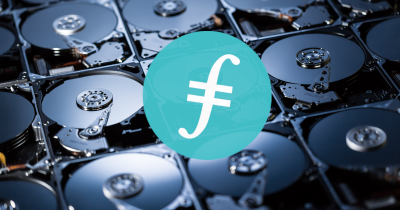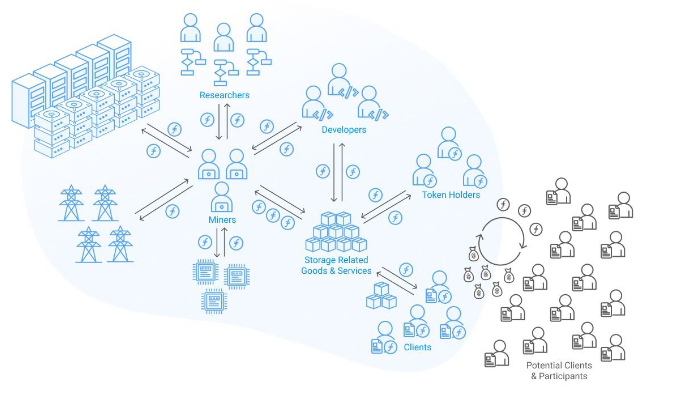Filecoin's Token Economics, What to Expect for Mainnet
Distributed file storage platform will allow miners and storage providers to earn Filecoin.

Key Takeaways
- Filecoin has released a tokenomics paper describing how incentives will work on its distributed storage service
- The project plans to beat its centralized competitors by offering faster, cheaper, and more reliable storage
- Filecoin should go live by the end of September 2020, according to Protocol Labs
Share this article
Protocol Labs has published a paper detailing the economic model planned for Filecoin, its upcoming distributed storage system.
Filecoin’s Data-Sharing Marketplace
The new Filecoin paper describes a “market for data” in which users can sell spare disk space, assuming that they have sufficient system resources and a fast enough internet connection. Meanwhile, other users can rent storage space from those providers.
The paper also describes the system as an “export economy.” This means the network is working together to turn code, system resources, and mined tokens into a system that can be delivered as a storage product to outside users—similar to an “island economy producing valuable goods and services from raw materials.”

Protocol Labs says that five stakeholder groups will trade tokens: developers, clients, miners, token holders, and ecosystem partners. Likewise, there will be three distinct Filecoin markets: file storage, file retrieval, and on-exchange token trading.
The service will have a few advantages over its centralized competitors. First of all, Filecoin will offer more reliable storage by “cryptographically verifying” that data is securely stored. It should also deliver files more efficiently: market forces will ensure that important data is stored near the “network edge, close to the clients, in a cost-effective way.” Given that the mainnet is yet to release, it is difficult to verify these claims or evaluate the network’s efficacy.
The network currently has a maximum of 17 PB (~17,000 TB) of storage space to offer, provided by 500 nodes.
Mainnet Next Month?
Filecoin’s roadmap suggests that the project will launch its mainnet between Sept. 14 and Sept. 28, 2020. However, those dates are tentative, and the team has pushed back the project’s launch date in the past. Previous announcements suggested that Filecoin would go live by the end of August; announcements prior to that suggested a December 2019 launch.
Furthermore, Filecoin’s native token has not yet been released to the public. All exchanges are trading IOUs and futures at the moment, not real tokens. It is not clear when this will change.
Despite Filecoin’s long development time, the team has been active: Protocol Labs also created IPFS, a related distributed storage system, and released it to the public in 2015. However, IPFS has none of Filecoin’s economic incentives.
Other projects such as Sia, Storj, and TRON have created their own distributed, token-based storage systems. Given that demand for Filecoin is not yet clear, it is hard to say whether any of those competitors have already overshadowed the project.
